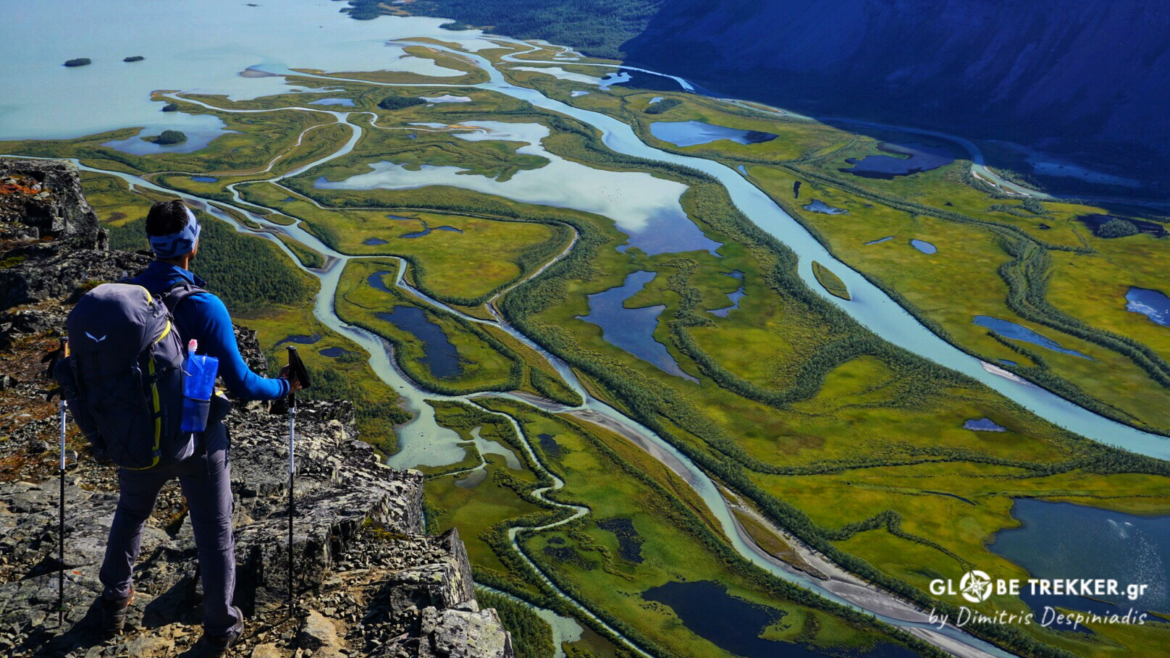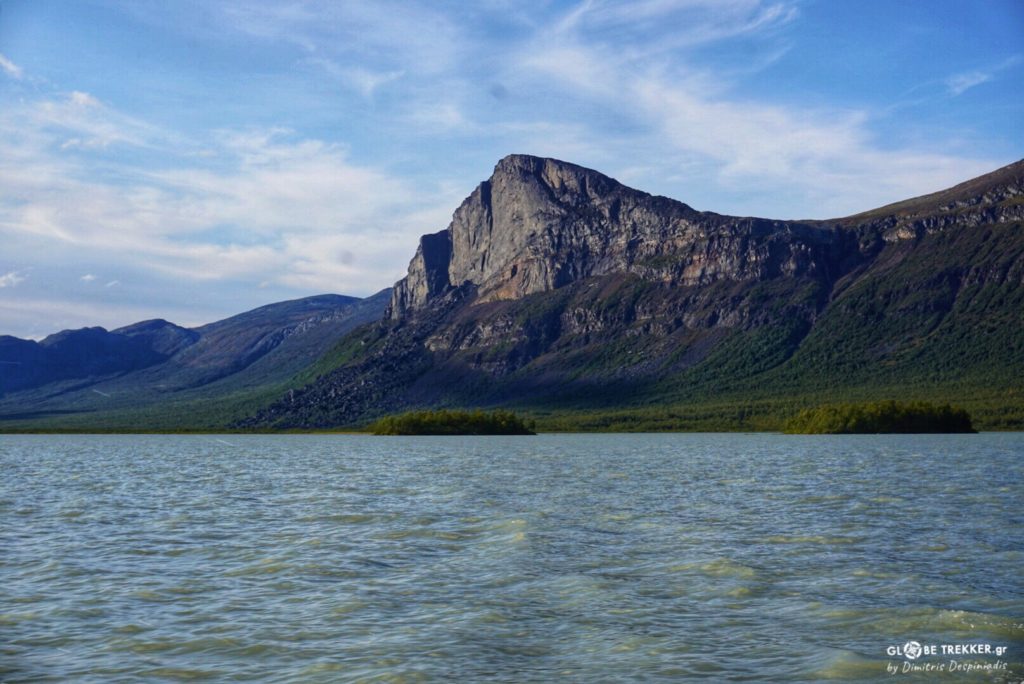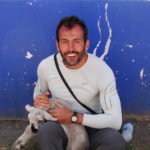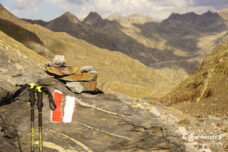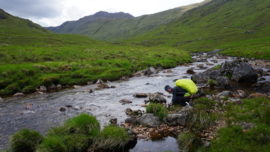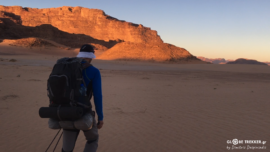The Northern Kungsleden !
Just before the end of August 2018 and after my experience on the Jordan Trail , I traveled with my partner in Swedish Lapland in order to get immersed for 9 days in its beautiful nature.
Carrying all our stuff and provisions on our backs, off we headed to experience in autonomy the region’s premier long distance Trail, the Kungsleden !
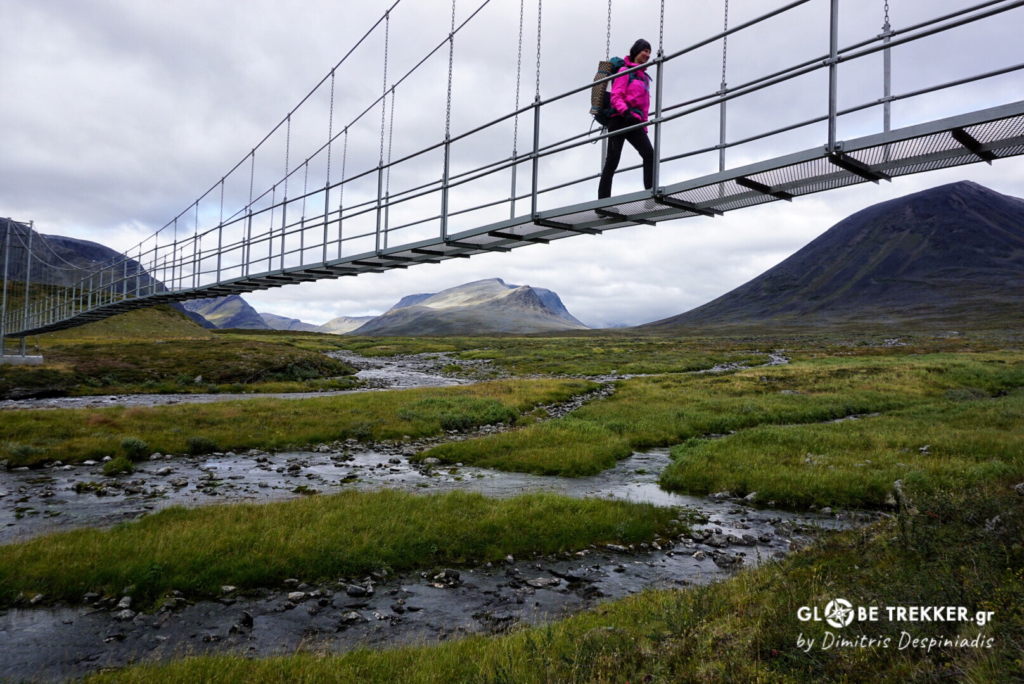
Kungsleden (The King’s Trail) crosses a vast part of Swedish Lapland through four National Parks and a UNESCO world heritage site. It was created at the beginning of the previous century and it’s considered as one the world’s most scenic long distance trails.
Wide glacial valleys surrounded by mountains, numerous picturesque lakes, tumbling rivers and streams and extensive birch forests make up a pretty good combination. Moreover, reindeer husbandry is carried out across the region by the native Sami people !
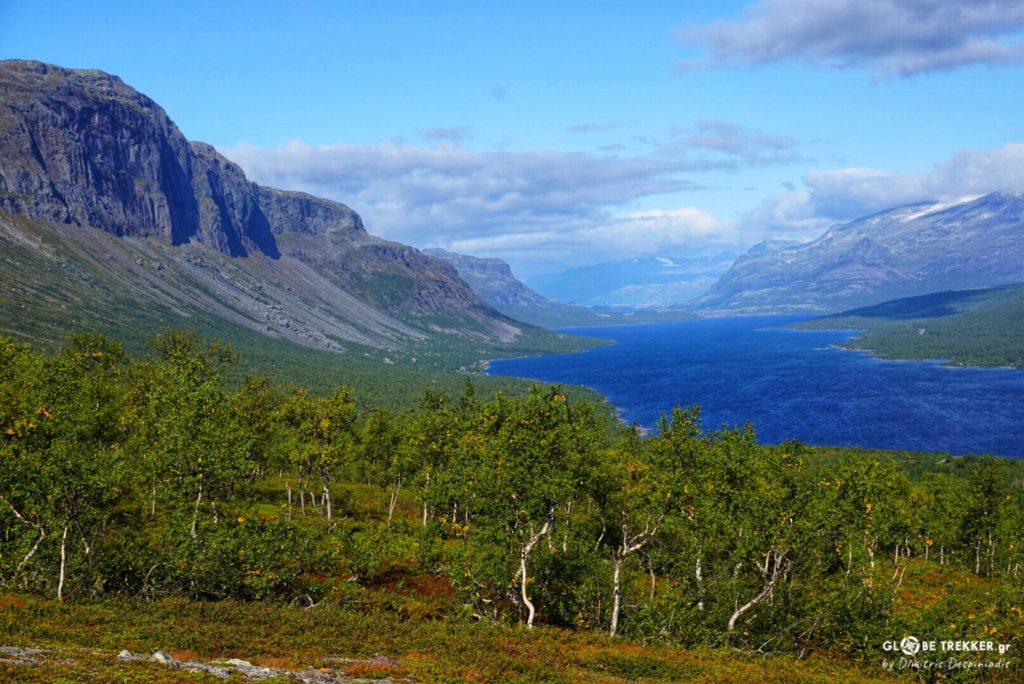
The Kungsleden is divided into 5 sections. We decided to walk the 3 northern sections (~220 km), the ones that are located entirely within the Arctic Circle ( Abisko-Kvikkjokk ) and are considered as the most scenic !
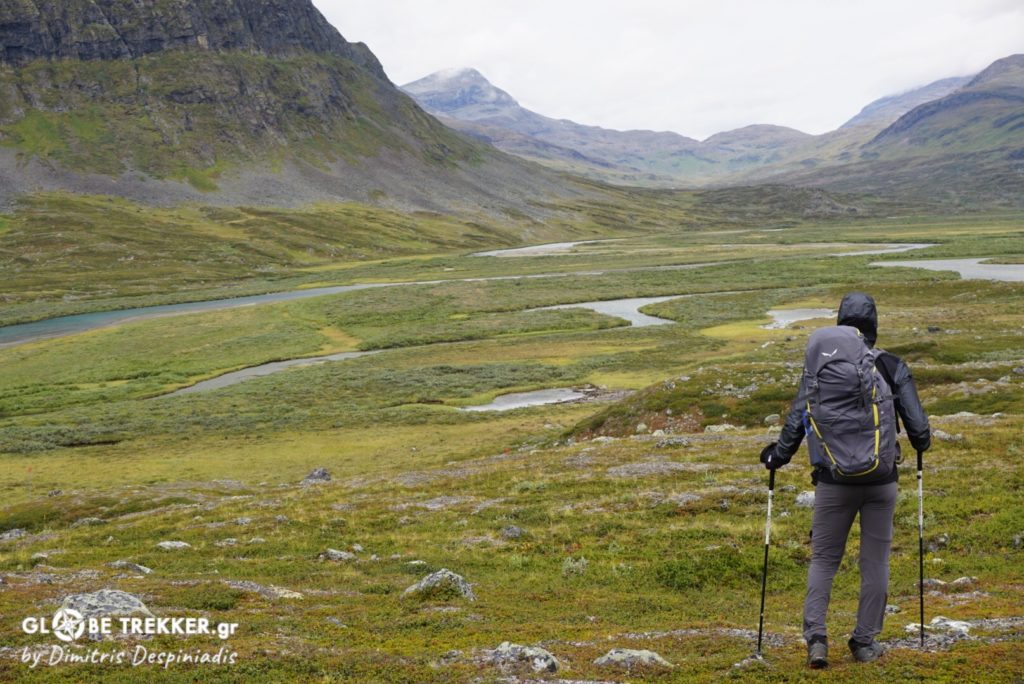
Abisko Mountain Station, Kungsleden’s northern terminus
When we arrived in Abisko on 25 August, the timing couldn’t have been better!
Following the severest heatwave that Lapland experienced in the last 150 years, temperature was back to normal digits and the mosquitoes, a common “headache” for everyone venturing in Arctic wilderness during the summer, wouldn’t be a major concern.

Quite sleep deprived from travel, we found a nice and quiet spot away from the noisy mountain station and by the side of the river, where we dose off for nearly 12 hours!
3 mountain stations ( with a whole lot of amenities ) and 11 huts ( without electricity and running water ) are spaced along northern Kungsleden, all at the disposal of those willing to pay their – pricy – services.
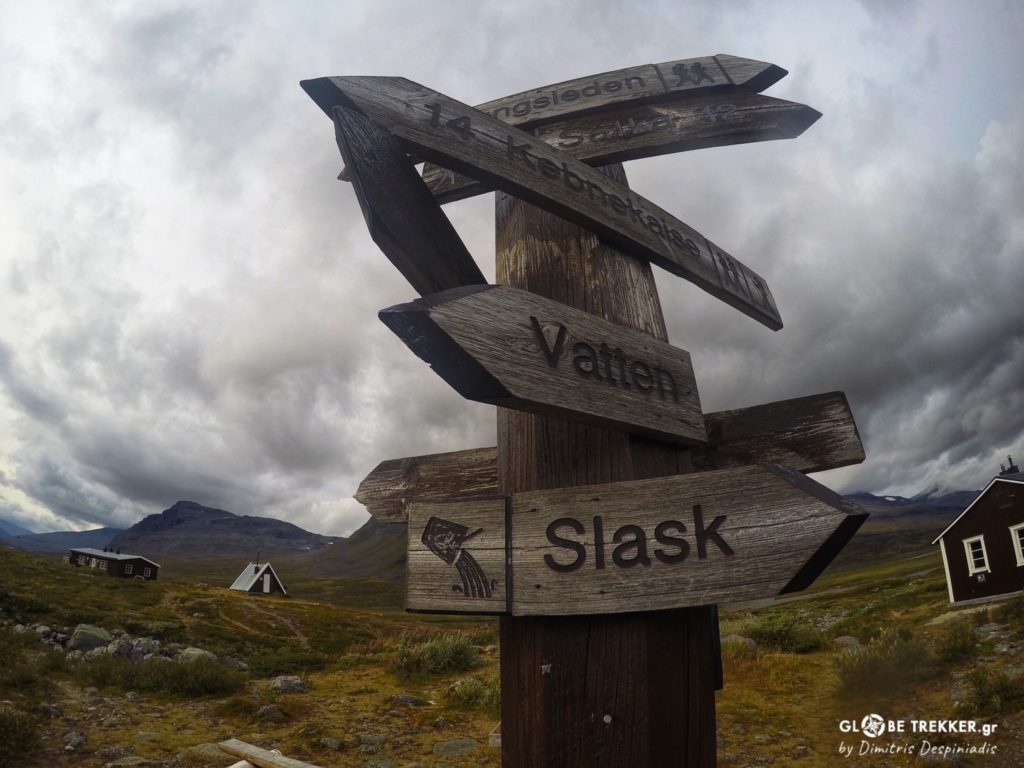
In contrary, many backpackers – including ourselves – chose to experience during our journey the deeper connection with Mother Nature that camping offers, by taking advantage of the “Freedom to Roam”, an Act that’s valid throughout the Nordic countries, which states that it’s every man’s right to wander – without mechanically propelled vehicles – and camp in public and privately owned open spaces !

The morning, feeling fresh, we started our journey. The birch forests of Abisko were soon left behind and we entered a world of wide glacial valleys and arctic tundra.

Having as a general plan to cover relatively short distances (~25 km) on a daily basis, we would be having plenty of time to enjoy our breakfast as well as for many breaks in order to appreciate more the beauty of arctic flora and fauna.
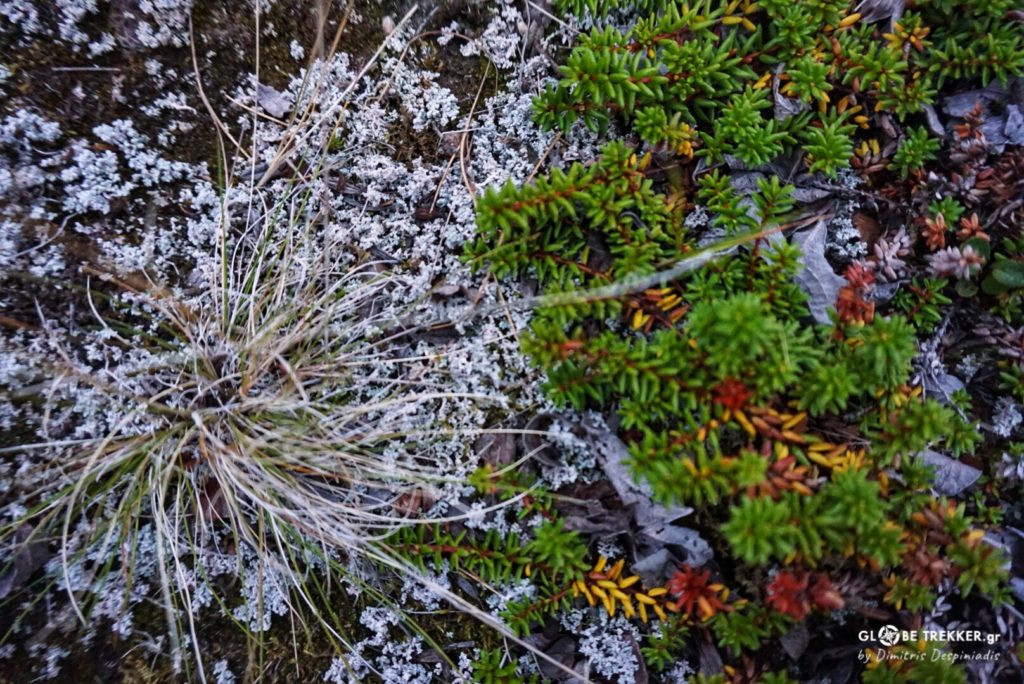
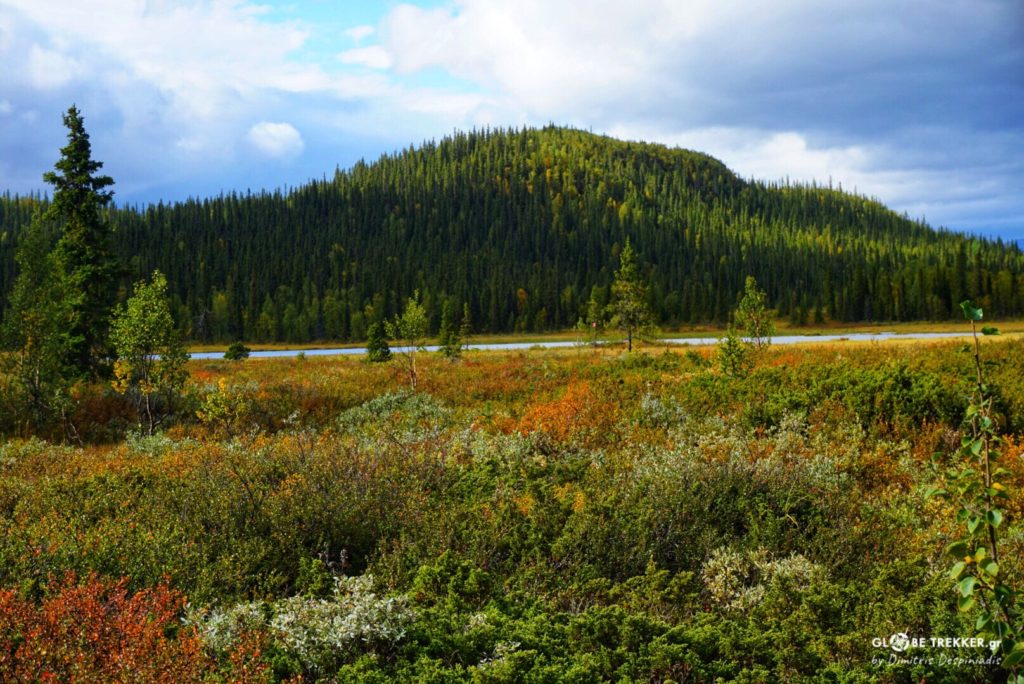
Lengthy wooden boards are placed in many parts of the trail, offering untroubled passage over boggy sections, quite the opposite from what I was going to experience a year later in the Scottish highlands !
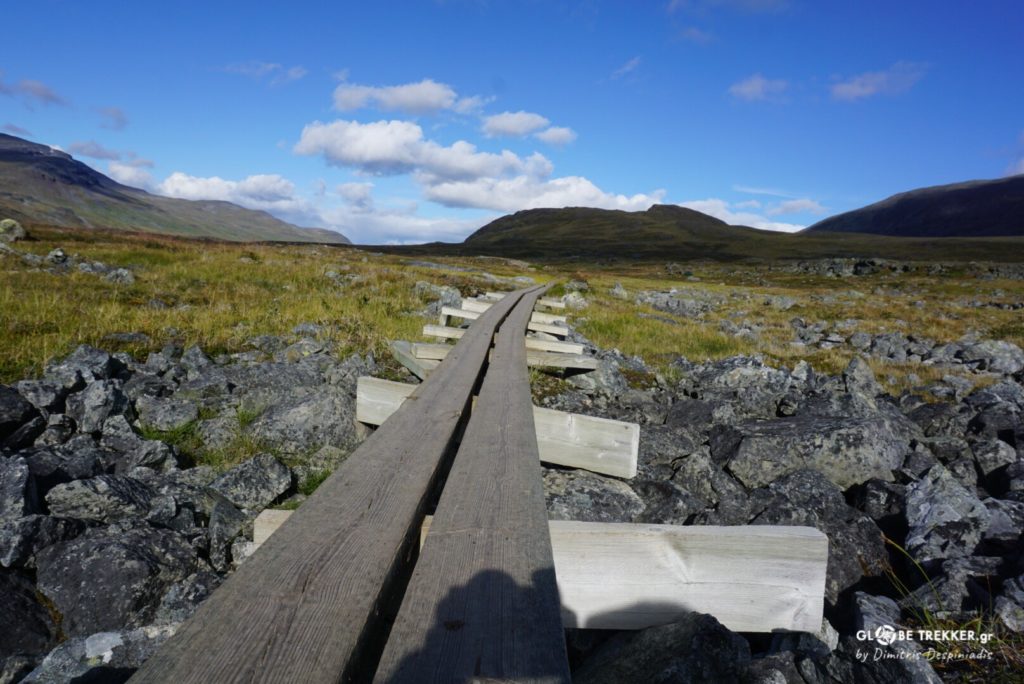
I found the trail – both the one we were following as well as the winter variant – superbly constructed and maintained, with red markings over rocks and trees and 2-3 meter metal poles every 50 meters or so. Bridges over streams, eliminate the potential of a treacherous ford in challenging conditions.
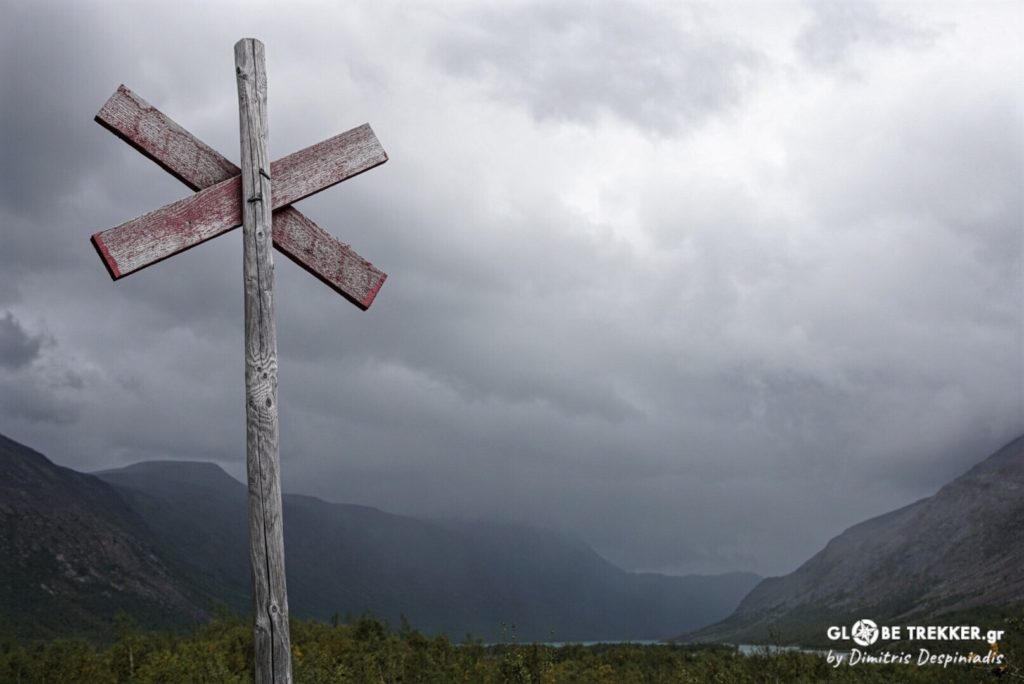
The air was the definition of fresh and the crystalline water was found very often, giving us the privilege to never carry more than 0,5 liter, as we were drinking it – unfiltered – at regular intervals right from the source !
More than often we were spotting really cozy places that tempted us to camp, although it was still early in the day. The first afternoon we enjoyed a spectacular rainbow. The second night was special next to a tarn, with myriads of stars above our heads!
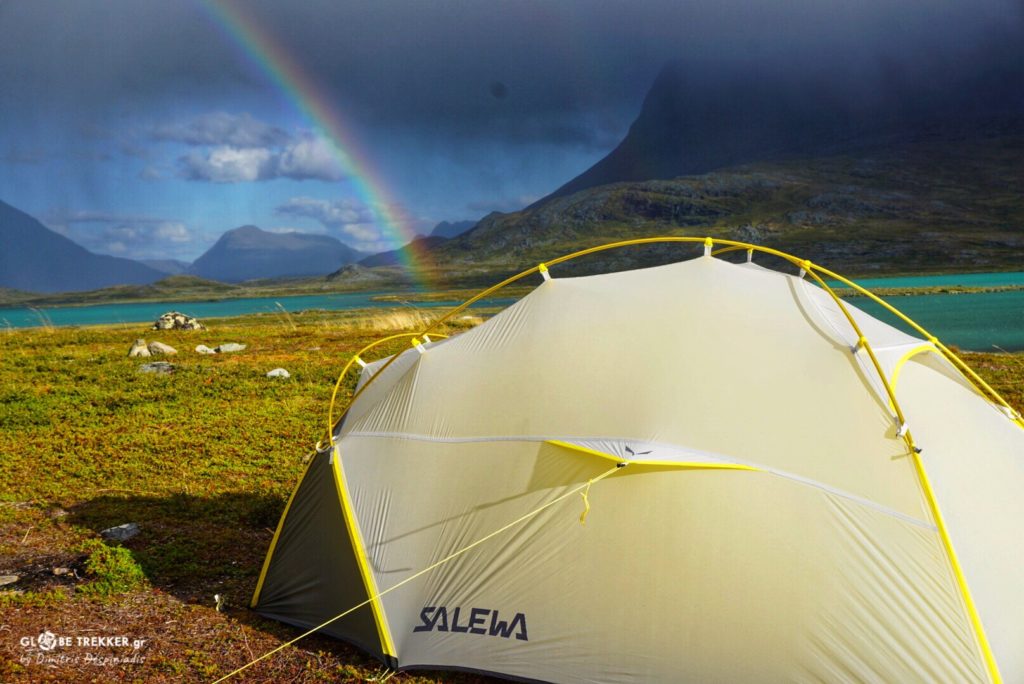
The third day we reached the highest pass, Tjäktja (1150m).
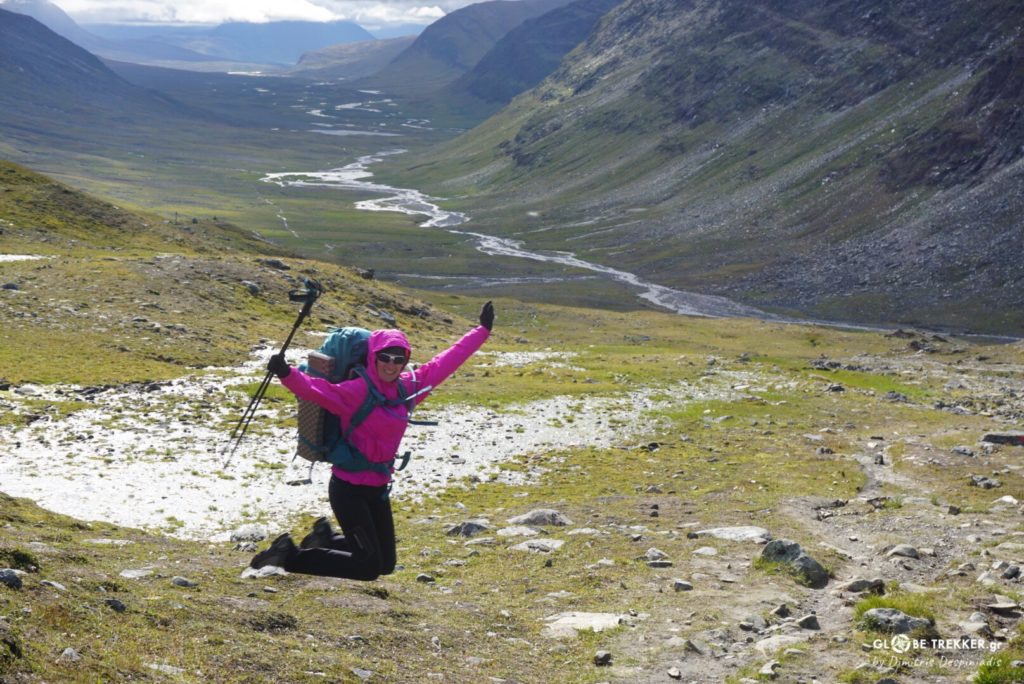
We entered Tjäktavagge valley, following the course of the river. Reindeer were silently grazing in the tundra.
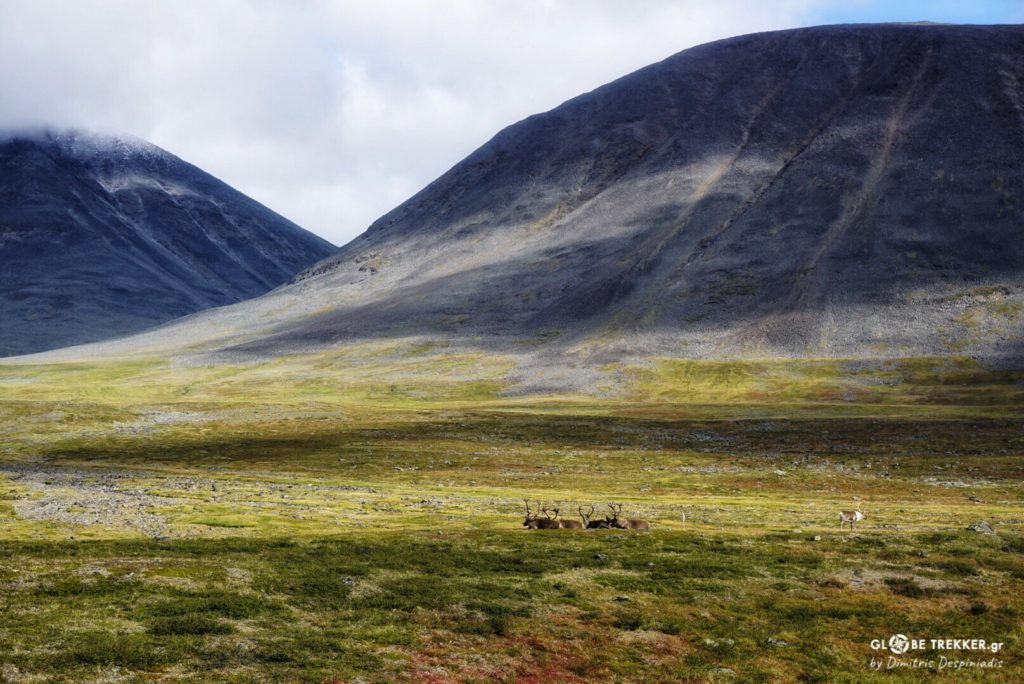
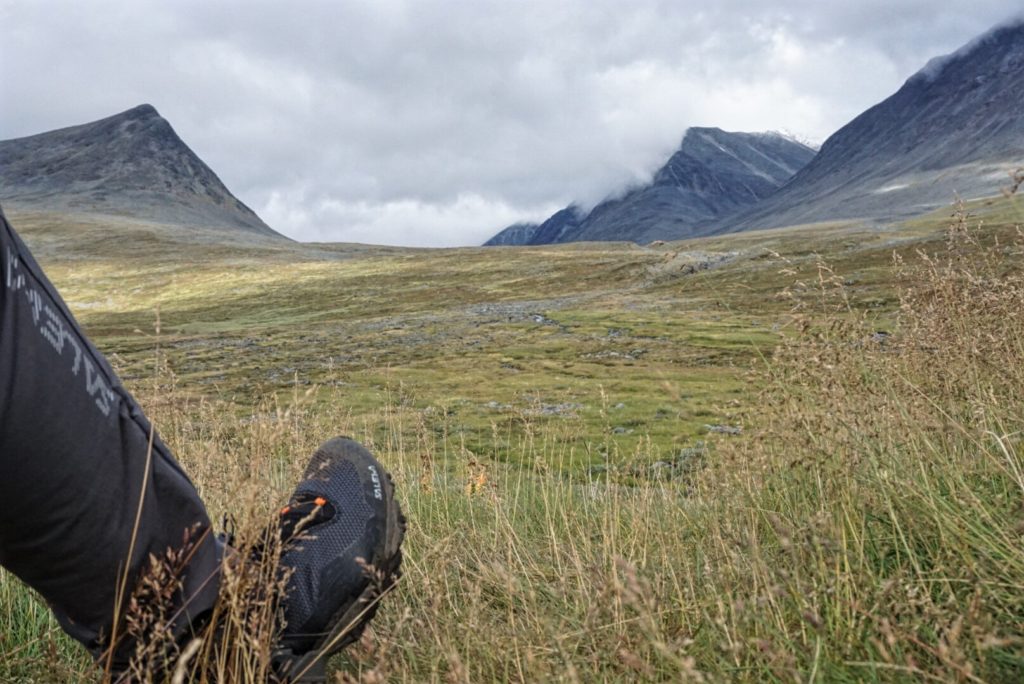
Beyond Singi hut, the scenery became more varied, broadly following a specific pattern on a daily basis.
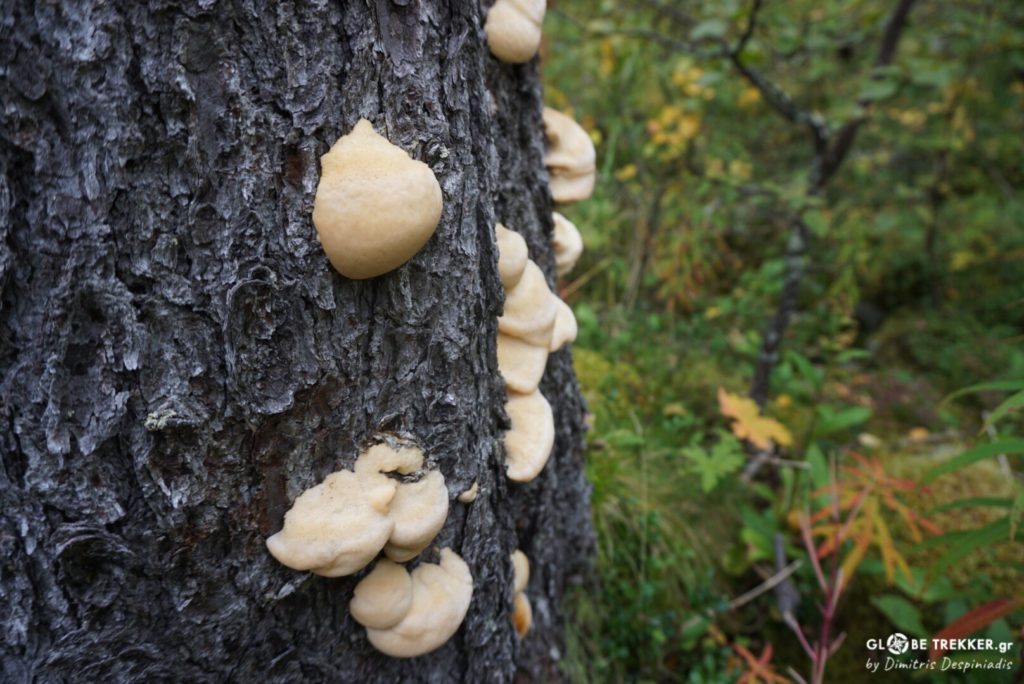
The day would start by a lakeshore. We would ascend through dense forest to a barren plateau and, after crossing it, we would descend – through forest again – to the next lake to the south.
Autumn arrives a bit earlier in Lapland and – in the end of August – birches already had a slight golden tinge!
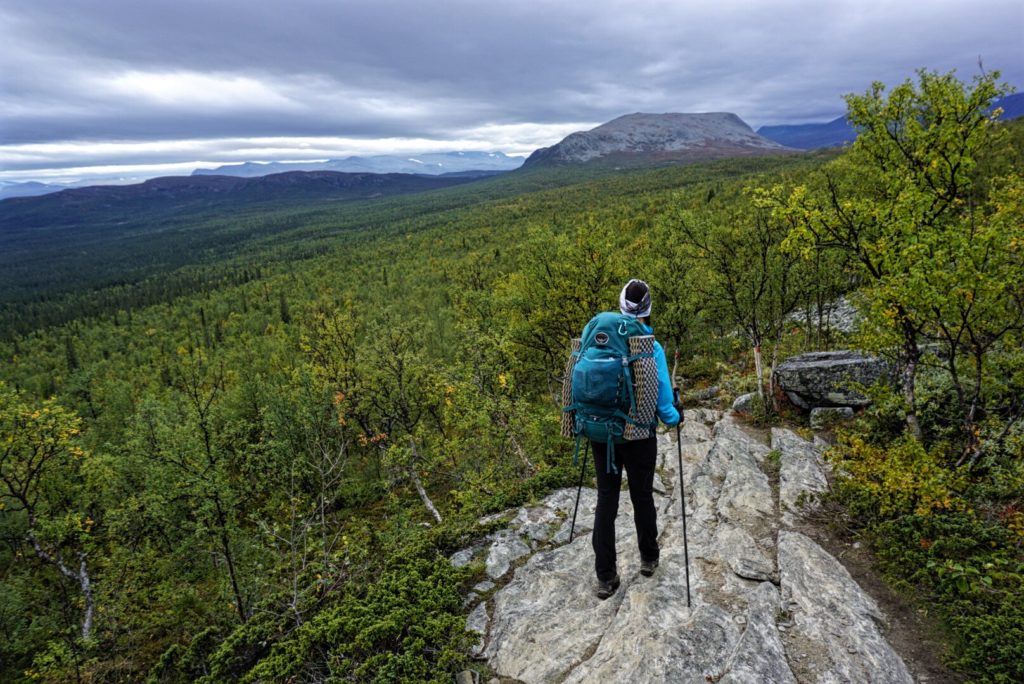
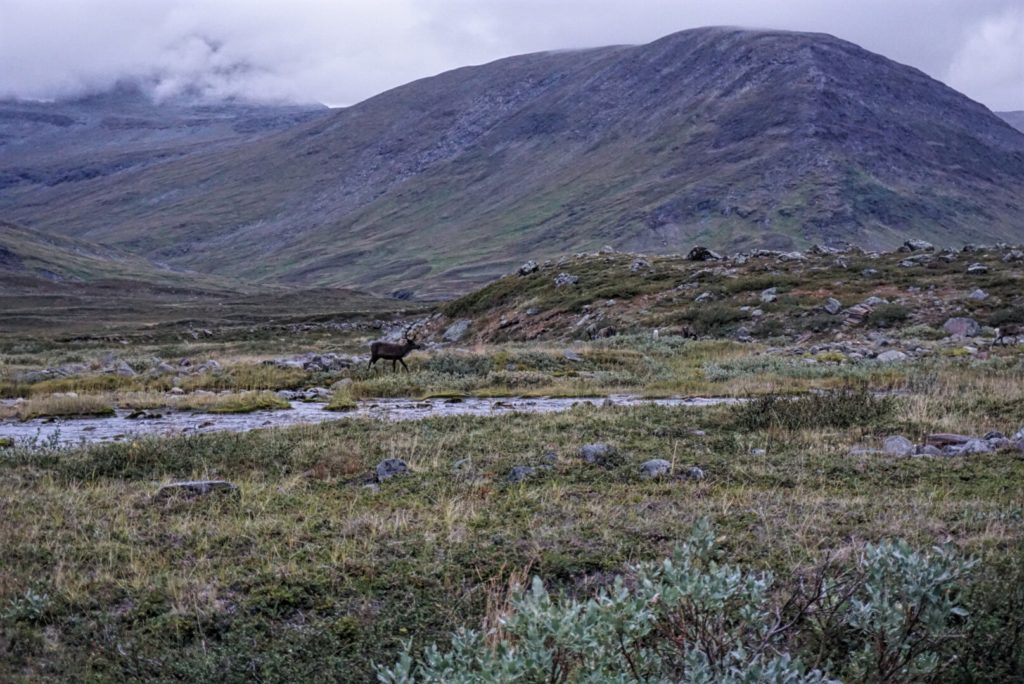

Myriads of blueberries were all around! We got so much accustomed to the sight, that we stopped noticing, as it was such a usual one.
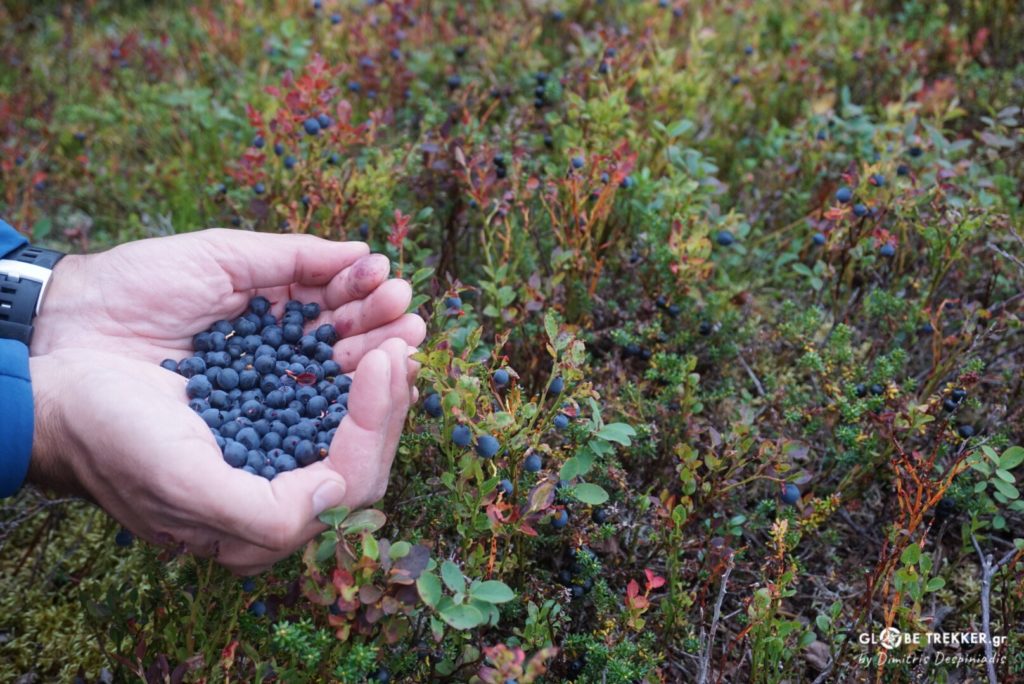
At the end of the day we were preparing our delicious meals and were tasting it slowly. Dinner when backpacking is always a ritual !
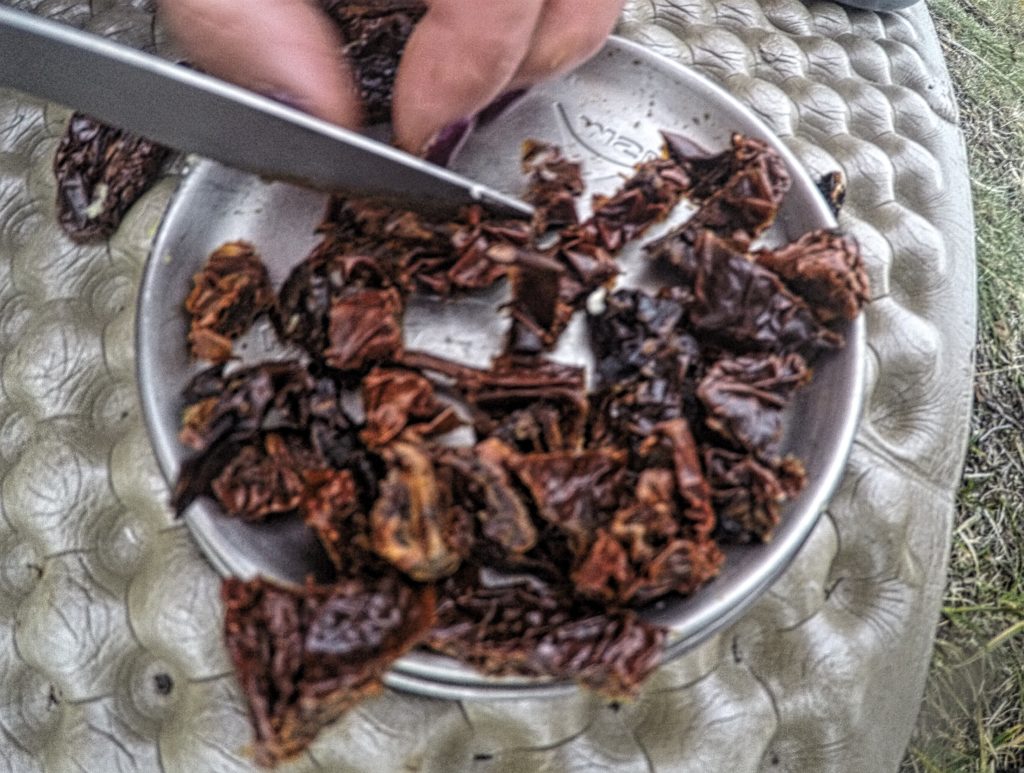
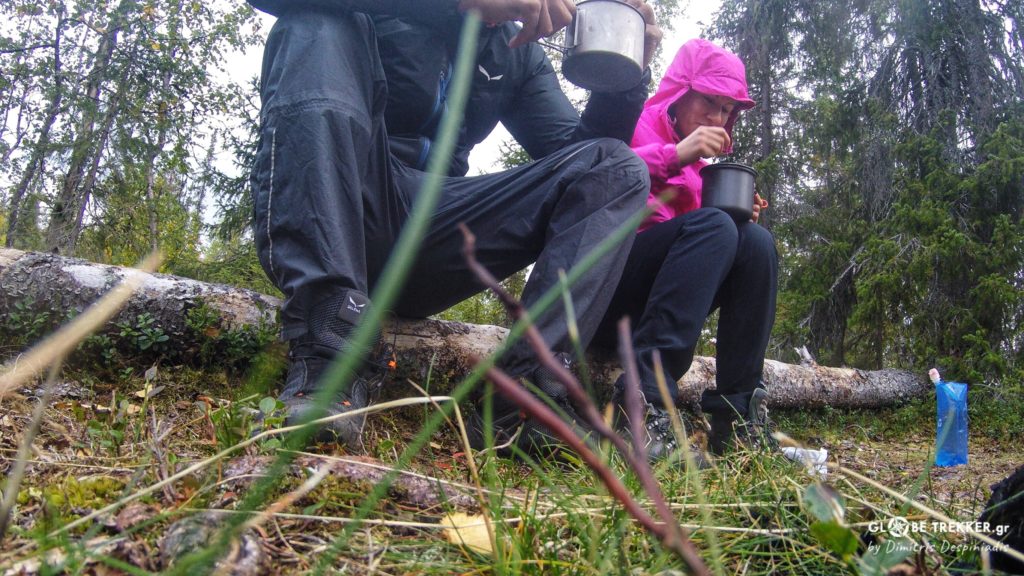
Some moments were so serene that you could almost…hear the silence!
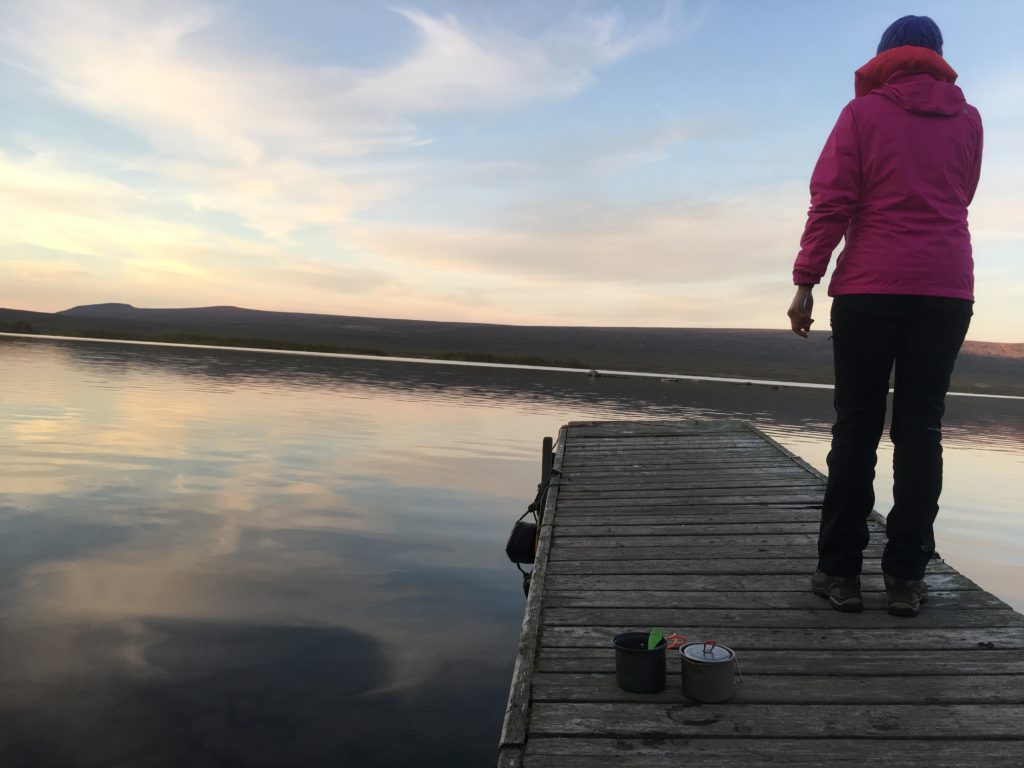
Teusajaure lake, day 4.
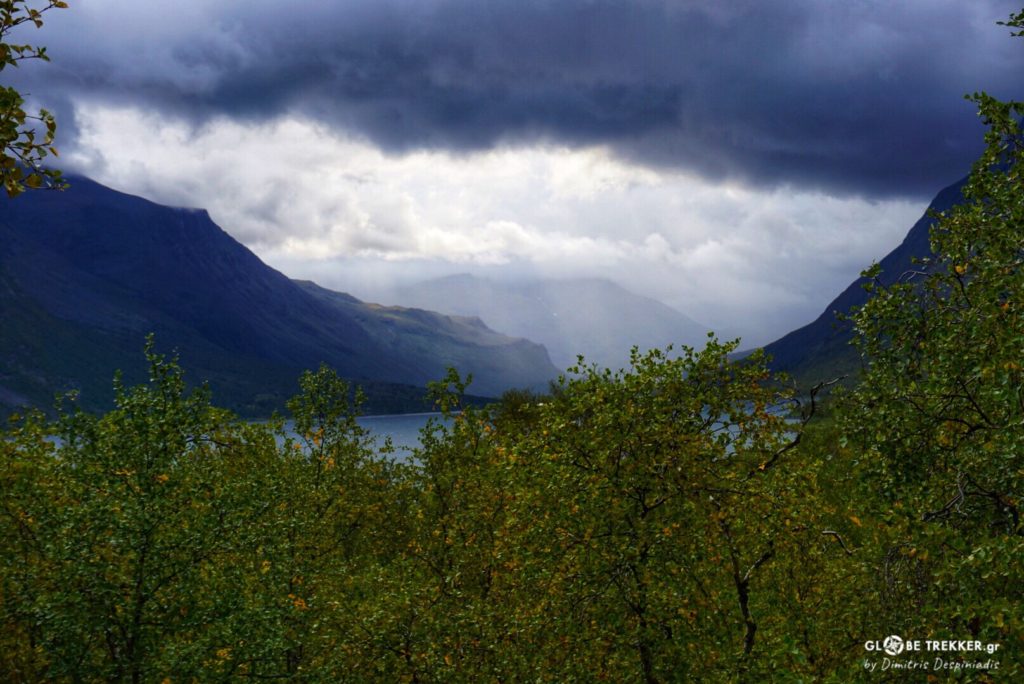
The lake, undeniably stunning, came into sight from the edge of the plateau. We descended steeply, through the birches that were reaching the shore and found the rowing boat that would bring us to the opposite shore. Stormy clouds were gathering and I was quite certain that it won’t be long till the wind would start to blow. Without further delay, we got on the boat and rowed the 1 km across. According to the map, an emergency hut should have been close by. We left our backpacks on the sand in order to check it out quickly or find another sheltered spot to camp. 50 meters higher up, we found a tiny hut nestled within the trees. It was primitive, but at the same time had more than we could wish for! Two benches for sleeping, a tiny table by the window for cooking, a wood stove and an ax. Perfect! We hurriedly brought our backpacks along. Then heard the first claps of thunder. We were sheltered. Perfect! We cooked and soon got ourselves warm. When we finally got asleep, the storm had already passed and only the sound of the wind was present, rattling through the thin trunks of the birches !
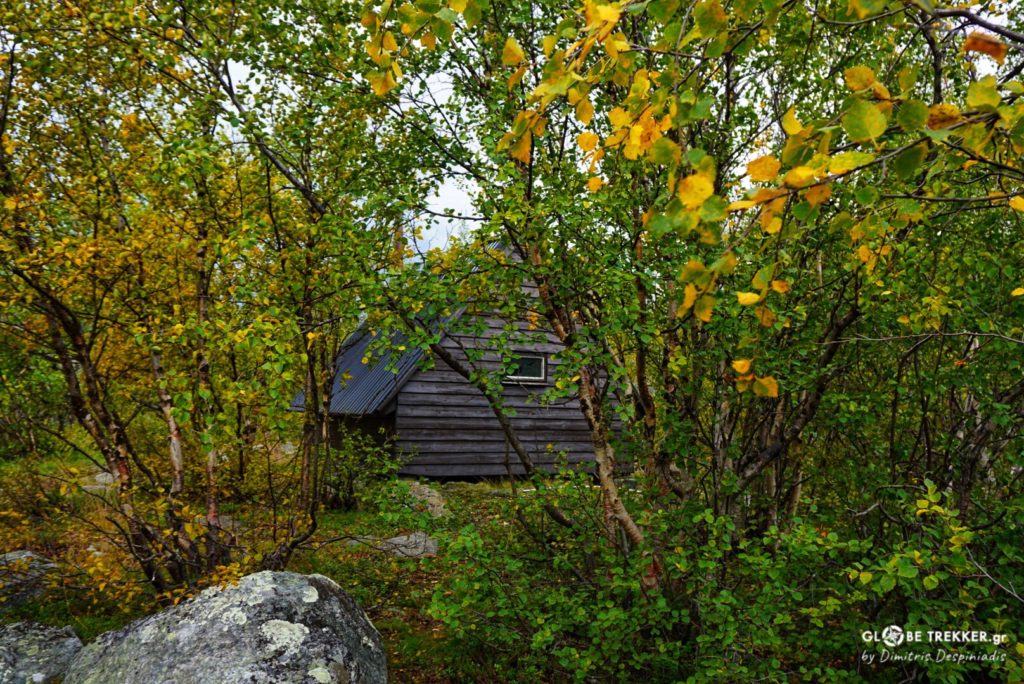

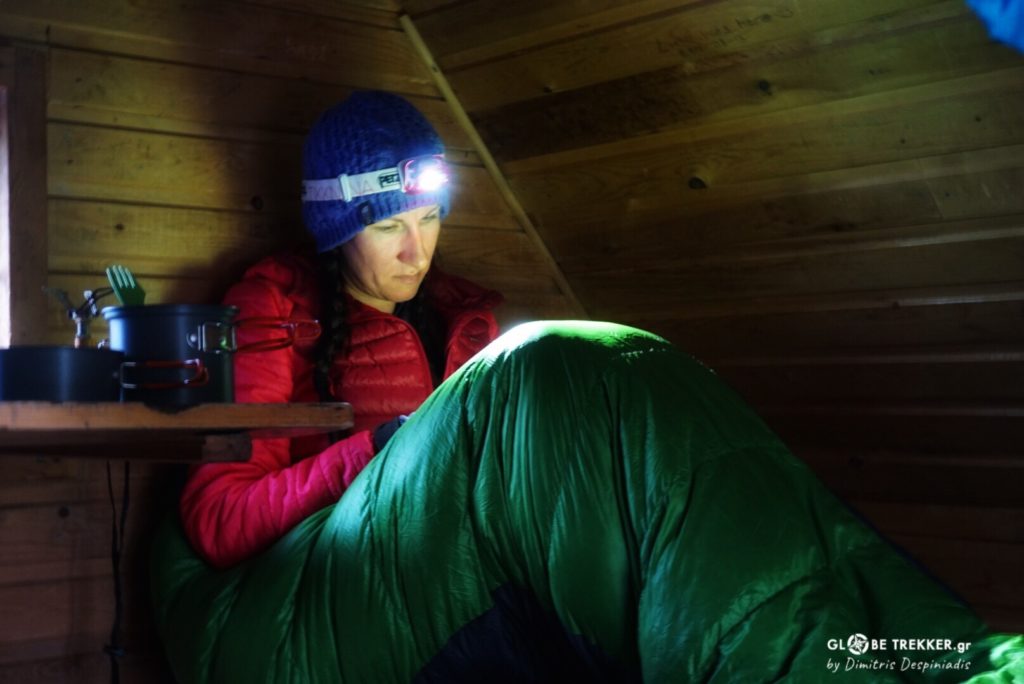
The next day was the only one that the weather was bad throughout the day, with dense fog and driving rain.
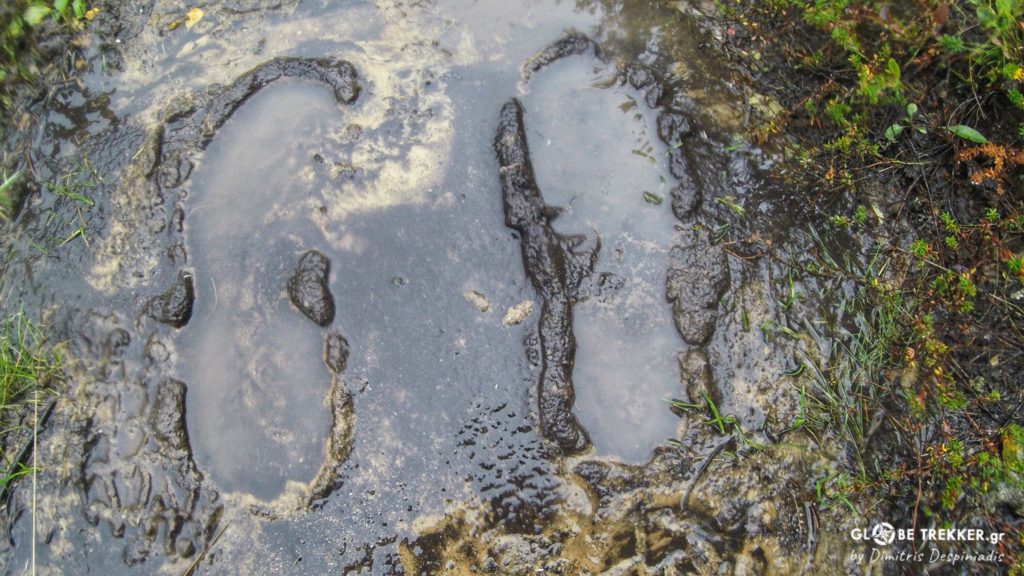
The afternoon we took the ferry to the southern shore of Langas lake and camped in the forest, pretty close to the mountain station, a series of huts nestled in a “Bob Ross painting’s” setting.
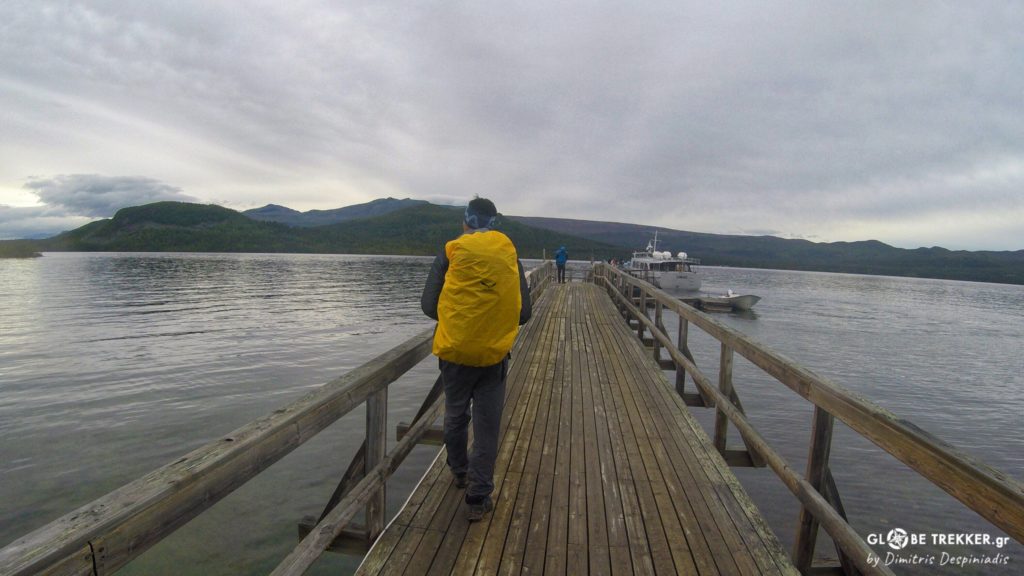
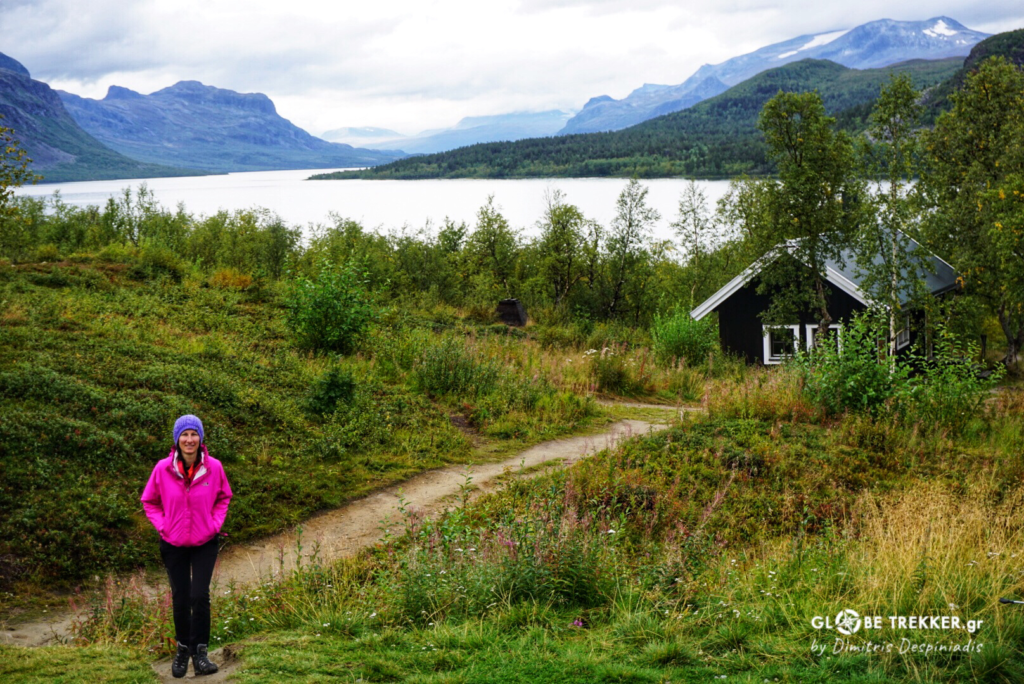
The weather was superb for the remaining days and allowed us to witness – among others – a masterpiece of Swedish nature !
Deviating for a few kilometers from our route, we ascended through bogs to the top of Skierfe mountain, from where we gained a panorama look of the spectacular Rapadalen Delta, a multicolored natural piece of art created by the greatest artist, Mother Nature !
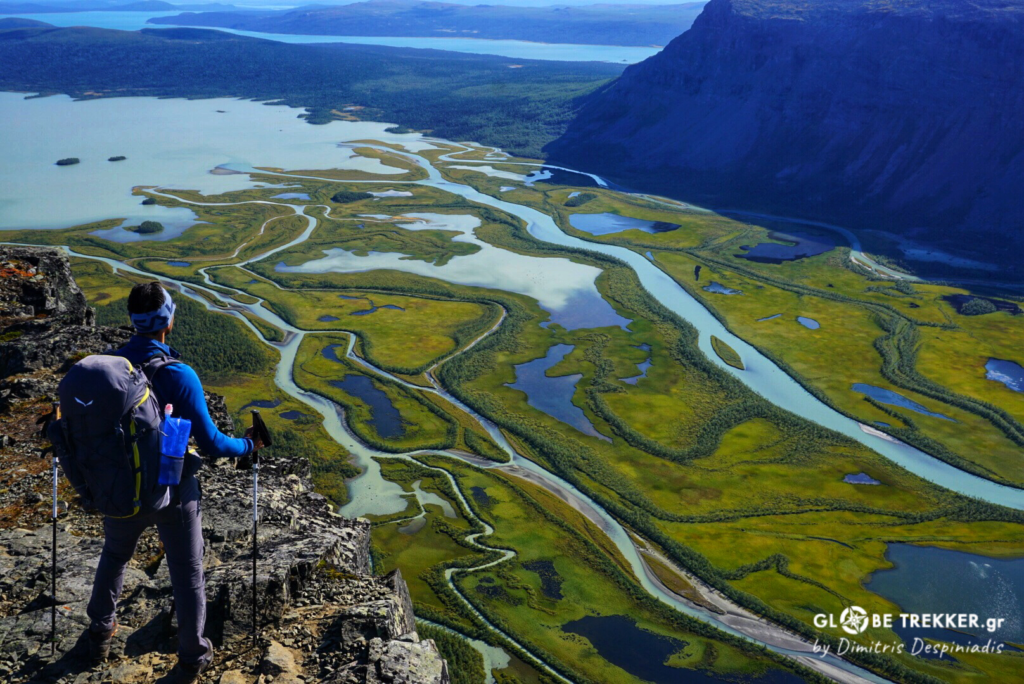
The same evening we camped next to the silent quay at the opposite shore of Laitaure lake, enjoying a nice view over Skierfe’s west face, a miniature version of El Cap.

The last two days we crossed typical arctic forests and cross paths higher up once more with the imposing reindeer !
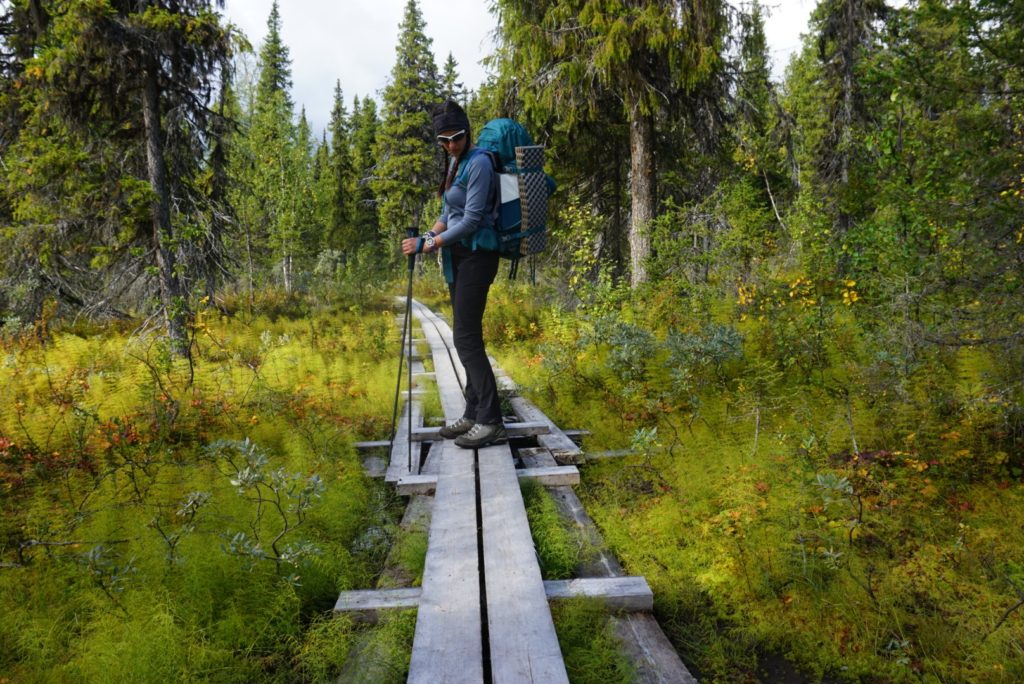
We reached Kvikkjokk, our final destination and camped in the forest, at the confluence of two rivers.
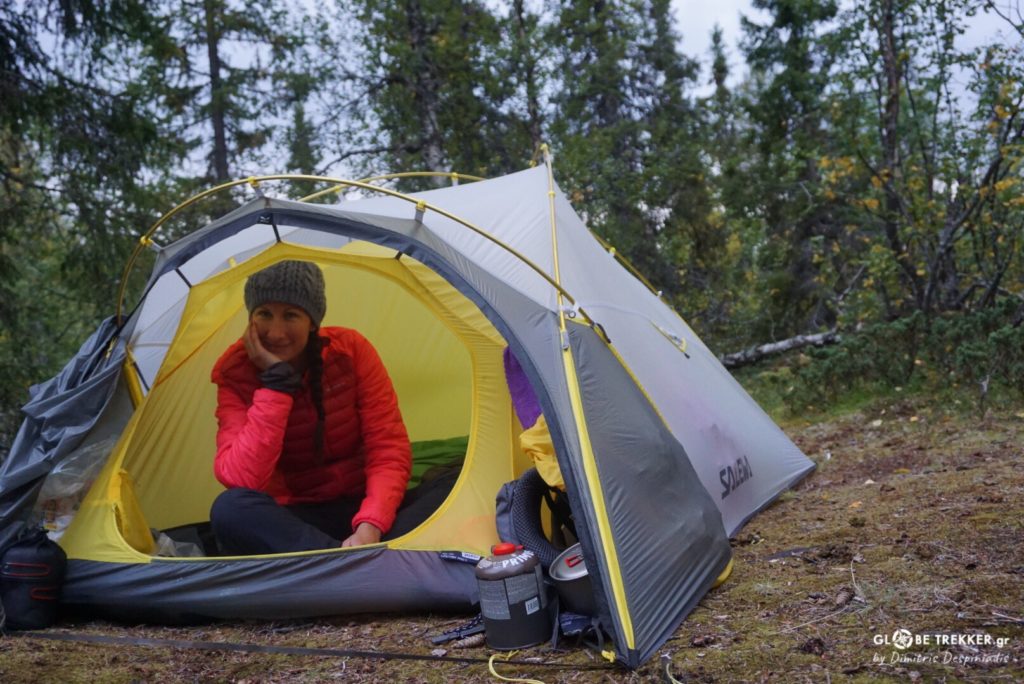
The sunset was special, an appropriate finale for another beautiful stroll in the Arctic !

As a conclusion, the overall beauty of the Northern Kungsleden ( and especially the 2nd and 3rd section in comparison with the most popular 1st ) exceeded our expectations. Due to the superb condition of the trail, the relatively minor elevation gain, the absence of exposure and the many huts that are spaced along the route, I would recommend it even to backpackers with not a whole lot of experience, who pay attention on the Arctic’s changeable weather.
Tempting ? 😊



